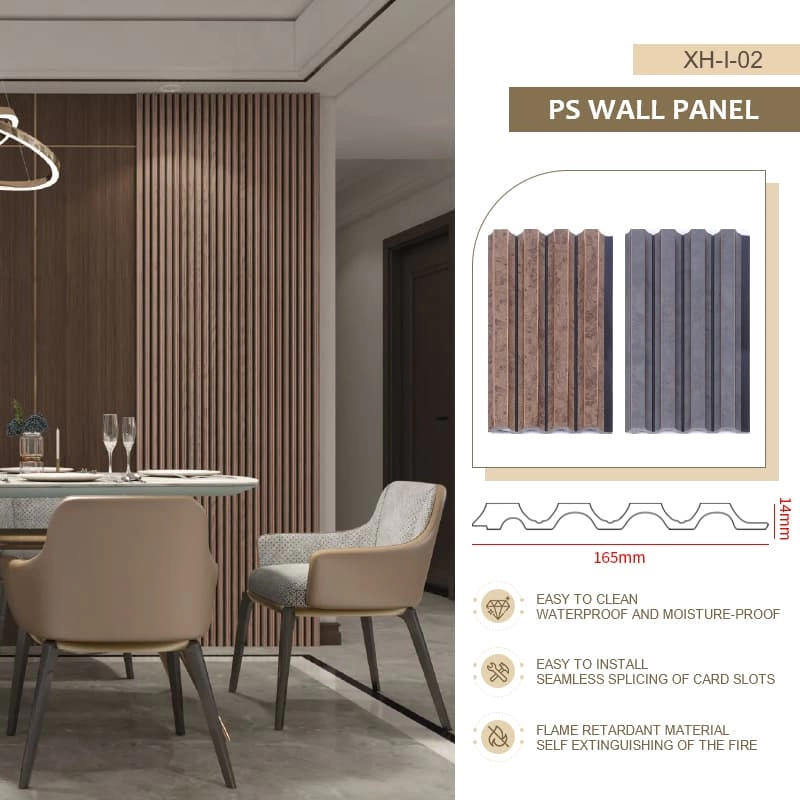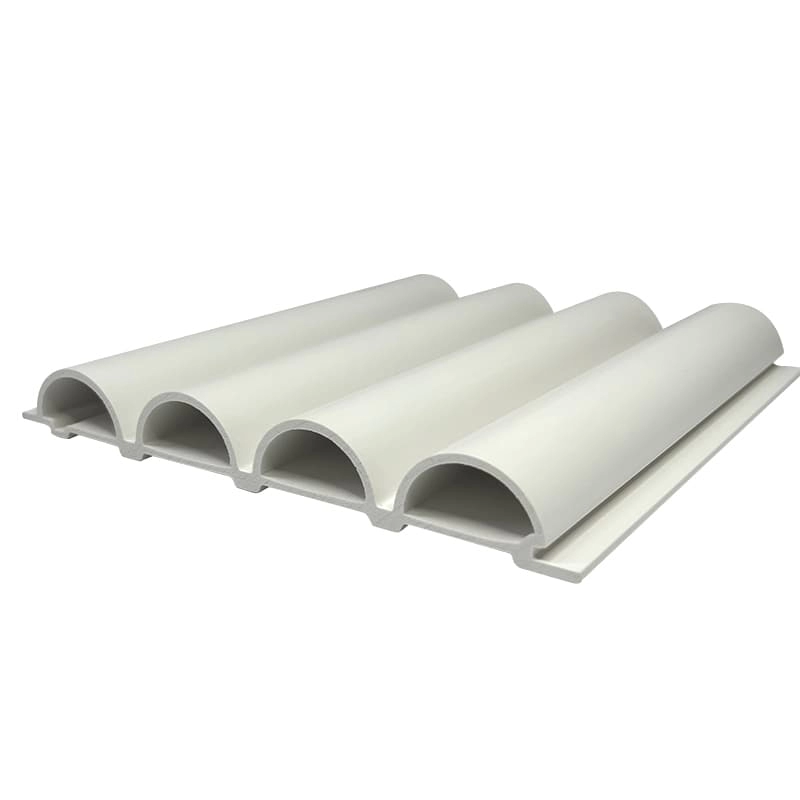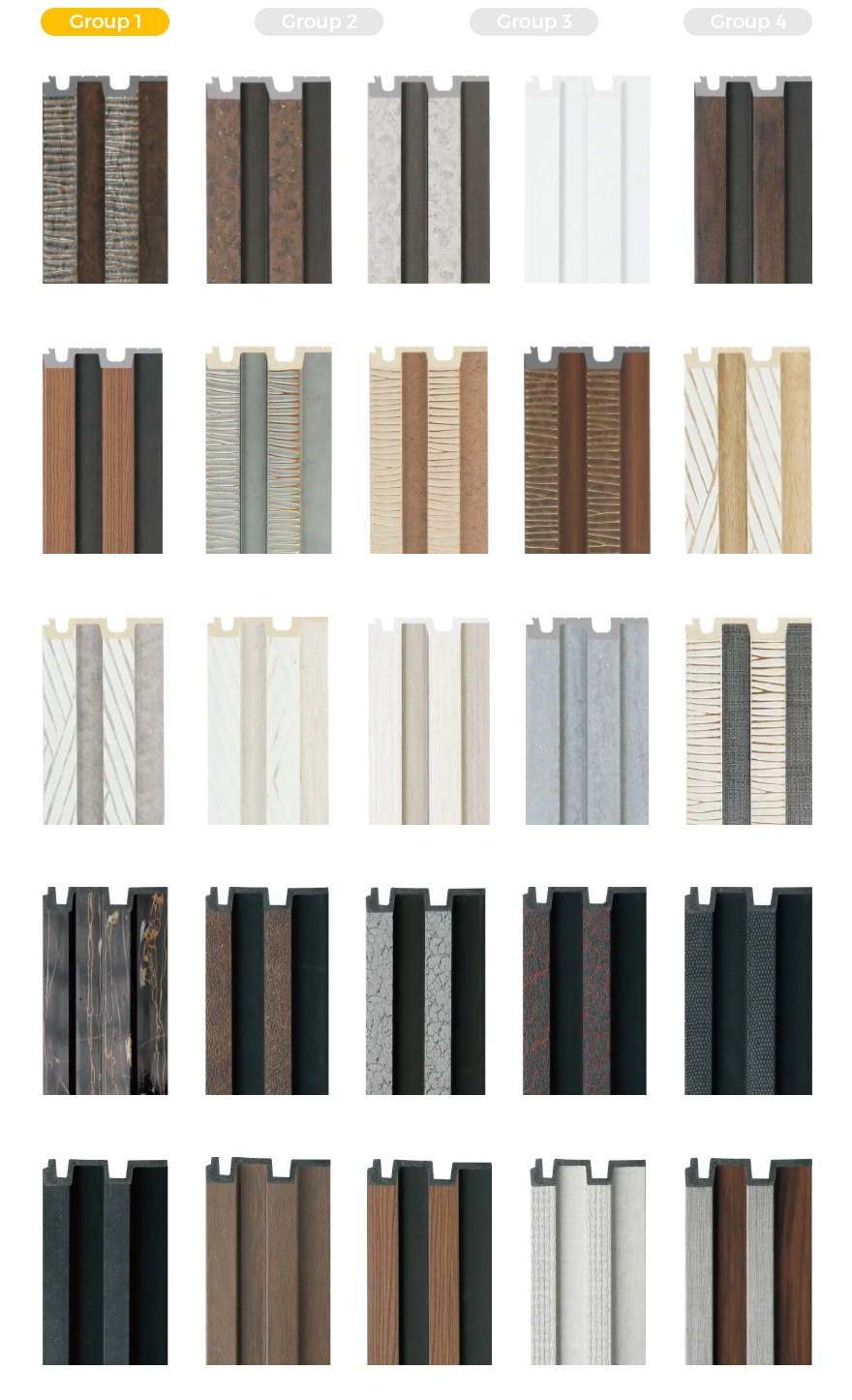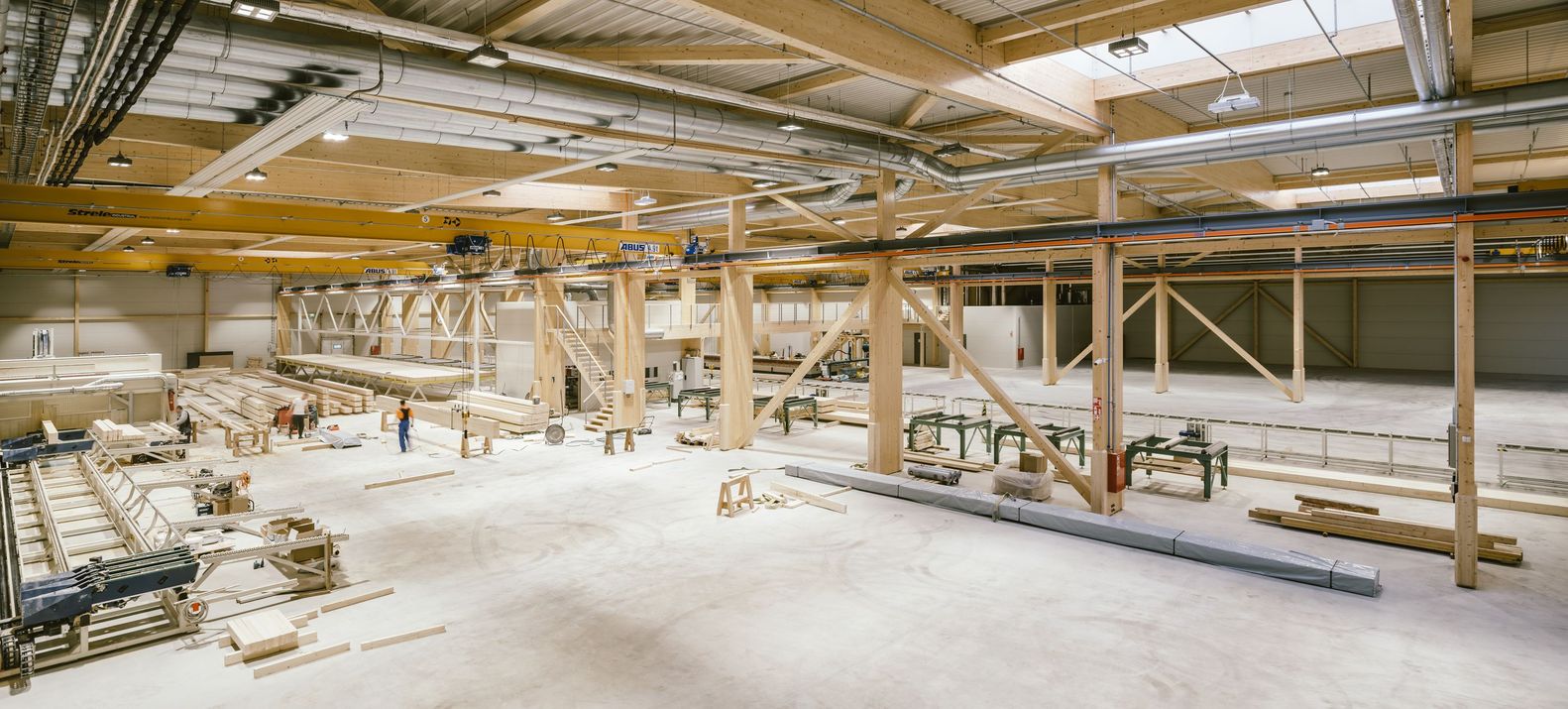CATEGORIES
Wall Panels vs Drywall: Uncovering a Smarter, Potentially Cheaper Wall Paneling Solution
When you're planning a new build or a renovation, the choice of wall material is a big one. For years, drywall has been the go-to for many. But what if there's a better way? This article dives into the world of wall panels – exploring whether they are truly a cheaper than drywall option and a more efficient investment for your project. We'll look at everything from initial cost comparison and installation ease to durability, maintenance, and overall aesthetic appeal. If you're wondering whether wood paneling or modern PVC panels could be your answer instead of traditional drywall and its associated mudding, you're in the right place. As Allen, with years of experience in manufacturing WPC Wall Panels and PVC Marble Sheets at my factory in China, I've seen firsthand how these innovative products can transform spaces and budgets for customers like Mark Wilson, a US-based company owner who values both quality and competitive pricing. Let's explore if wall paneling is the smarter choice for your next wall project.
Rethinking Your Walls: Is Drywall Always the Best or Cheapest Choice?
For decades, drywall has dominated the construction landscape as the standard material for interior wall and ceiling finishes. It's familiar, widely available, and contractors are generally experienced in its installation. However, just because something is traditional doesn't mean it's always the optimal or most cost-effective solution for every project. As someone who has been in the building materials industry for a long time, I, Allen, have seen a significant shift in how people approach their wall solutions. We're seeing more clients, like Mark from the USA, actively seeking alternatives that offer better value, easier installation, and enhanced performance.
The common perception is that drywall is inherently cheaper. But is this always true when you factor in the entire process? Think about the multiple steps involved: hanging the heavy sheets, the meticulous taping and mudding (often requiring multiple coats and sanding), priming, and finally, painting. Each of these steps adds to labor costs and project timelines. What if there was a panel system that could simplify this, offering a beautiful finish with less fuss and potentially a lower total cost in the long run? This is where modern wall panels enter the conversation, challenging the reign of drywall by providing an innovative and often more practical alternative.
This consideration is especially pertinent for projects where time is money, or where specific performance characteristics like water-resistant properties or unique aesthetics are desired. The limitations of drywall, such as its susceptibility to water damage, its tendency to dent or crack easily, and the messy nature of its installation and repair, are prompting many to explore other panel options. It's time to look beyond the upfront cost per square foot of drywall sheets and consider the complete picture.
What Exactly Are Wall Panels and How Do They Differ from Traditional Drywall?
So, what are these wall panels we're talking about? Unlike drywall, which is essentially gypsum plaster pressed between two thick sheets of paper, wall panels encompass a wide variety of materials, designs, and functionalities. From classic wood paneling that brings warmth and character to a room, to modern PVC wall panels that offer sleek, waterproof surfaces, the options are vast. At my factory, we specialize in WPC (Wood Plastic Composite) wall panels and PVC Marble Sheets, which are engineered to provide superior performance and aesthetic appeal. These panels come in various sizes, thicknesses, and finishes, often pre-finished, meaning they don't require painting or additional surface treatments after installation.
The fundamental difference lies in their construction and application. Drywall provides a raw surface that needs considerable finishing work. Many wall panels, on the other hand, are designed for a more direct install-to-finish experience. For example, WPC Wall Panels often feature a tongue and groove system, making them easy to work with and enabling a quicker, cleaner installation process. This contrasts sharply with the multi-stage process of drywall installation, which involves cutting, screwing, taping, applying mud, sanding, priming, and then finally applying paint or wallpaper.
Furthermore, wall panels can offer specific functional benefits that standard drywall may not. For instance, PVC panels are inherently water-resistant, making them an ideal choice for bathrooms, kitchens, and basements. WPC panels combine the aesthetic of wood with the durability and low maintenance of composites. These panels are designed to withstand daily wear and tear, often better than drywall, which can be easily damaged. The texture and visual options with wall panels are also far more diverse out-of-the-box compared to the flat surface of drywall, which relies entirely on paint or other coverings for its final look good appearance.

The Big Question: Are Wall Panels Really a More Affordable Option Than Drywall Initially? (Cost Comparison)
This is often the first question on everyone's mind: the cost comparison between wall panels vs drywall. When looking purely at the material cost per square foot, some basic drywall sheets might seem cheaper than certain types of wall panels, especially premium or specialized ones. However, this is a very narrow view of the overall investment. As my customer Mark Wilson always emphasizes, "The material cost is just one part of the equation; I need to see the full picture to understand the value." And he's absolutely right.
To get an accurate cost comparison, we must consider the "total installed cost." This includes not only the panel or drywall itself but also all associated materials (screws, tape, mud, primer, paint for drywall; adhesives or fasteners for panels) and, crucially, labor costs. Because wall panels, especially pre-finished varieties or those with simple interlocking systems, can be installed much faster and with less specialized labor than drywall, the savings on installation can be substantial. A contractor might spend days finishing a drywall project, whereas a similar area with wall panels could be completed in a fraction of the time.
Think about it: drywall installation means hanging, then at least three coats of mudding with sanding in between, then priming, then at least two coats of paint. This is time-consuming and labor-intensive. Many wall panels, like the XHI02 OEM Interior Decorative Wall Panels, are pre-finished. Once they are up on the wall, the job is essentially done. No paint, no mud, no extensive cleanup. So, while a panel itself might have a higher unit price than a sheet of drywall, the significantly reduced labor and ancillary material costs often mean wall panels offer a lower total cost of installation. This is a key factor that can make wall paneling a surprisingly cheaper option overall for your wall project.
Beyond the Price Tag: How Does Wall Panel Installation Save You Time and Money vs. Drywall?
The installation process is where wall panels truly shine in the drywall vs panel debate, often leading to significant time and cost savings. Traditional drywall installation is a multi-stage, often messy affair. You have the cutting, fitting, and screwing of the drywall sheets, followed by the meticulous and skilled process of taping seams and applying multiple layers of joint compound (the mudding part). Each layer of mud needs to dry, then be sanded, creating a lot of dust. This is before you even think about priming and painting the wall.
Contrast this with the installation of many wall panels. As a manufacturer, we design products like WPC and PVC panels with ease of installation in mind. Many systems use tongue and groove mechanisms, or they can be directly adhered or screwed to existing walls or framing. This means a contractor or even a skilled DIYer can install these panels much more quickly. There's often no need for specialized skills like plastering. The reduction in installation time directly translates to lower labor costs, which can be a huge part of any construction budget. If you can complete a wall project in one day with panels versus three to five days with drywall (including drying times), you save money.
Furthermore, the cleanup is minimal with wall panel installation. No clouds of drywall dust settling everywhere, no leftover paint cans or mud buckets. This not only saves on cleanup time and cost but also makes wall panels a great option for renovation projects in occupied spaces. The speed and cleanliness mean less disruption. For businesses like Mark's, who supply to construction firms, faster project completion using wall panels means their clients can move on to the next job sooner, increasing overall efficiency and profitability. This ease and speed make the panel a very attractive alternative to the more cumbersome drywall process.
Can You Paint Wall Panels Like Drywall? Exploring Customization and Aesthetic Appeal.
A common question I hear is about the flexibility in appearance: "Can I paint wall panels if I want a change later on, just like I would with drywall?" The answer depends on the type of panel. Many wall panels, especially PVC panels or those with a laminate finish, are designed to be pre-finished and low maintenance, meaning they look good right out of the box and don't require paint. Their appeal often comes from their inherent color, texture, or pattern, such as the beautiful look of our High Glossy 4x8 Pvc Marble Panels which mimic real stone without the cost or installation hassle.
However, some types of wall panels, like certain fiberboard or wood paneling products (including some plywood options), can indeed be painted. If future customization with paint is a high priority, it's essential to choose a panel material that is receptive to it. Traditional drywall is, of course, a blank canvas, designed to be painted or wallpapered to achieve the desired finish and appeal. This is one of its perceived advantages – endless color choices. But it's worth noting that achieving a high-quality paint finish on drywall requires proper priming and multiple coats, adding to the overall project time and cost.
The aesthetic appeal of modern wall panels goes far beyond just paintability. Panels offer a huge range of textures, patterns, and three-dimensional designs that are difficult or very costly to achieve with drywall and veneer plaster. Think of fluted wood paneling, realistic stone or brick effects, or sleek, high-gloss finishes. These options can instantly elevate the design of a space. While drywall provides a flat surface, wall panels can add depth, character, and a unique tactile quality to a wall, often becoming a focal point in their own right. The choice between a paintable surface and a pre-finished, textured panel depends on your design goals and desire for future changes.

Durability and Longevity: Which Stands Stronger, Wall Panels or Traditional Drywall?
When considering any building material, durability and longevity are key factors for a good investment. How well will your wall hold up over time? This is where we see another significant difference in the wall panels vs drywall comparison. Standard drywall, while common, is relatively soft and prone to damage. It can easily dent from an accidental knock, crack due to settling or impact, and is notoriously susceptible to water damage. A small leak can quickly lead to a swollen, crumbling wall section that requires costly repairs.
On the other hand, many wall panels are engineered for enhanced durability. For instance, WPC panels are composite materials that are more resistant to impacts, scratches, and moisture than drywall. PVC wall panels are inherently waterproof, making them exceptionally durable in humid environments or areas prone to splashes. They won't warp, rot, or grow mold and mildew when exposed to moisture, a common issue with drywall in bathrooms or basements. This inherent toughness means wall panels can often withstand the rigors of daily life much better, resulting in a long-lasting finish that maintains its appearance for years.
This superior durability contributes to the long-term value of wall panels. While drywall may require periodic repairs for dents, cracks, or water damage, sturdy wall panels often require little more than occasional cleaning. This resilience is a major selling point for my clients. They appreciate that choosing a more durable panel solution can save them headaches and expenses down the line. The longevity of these materials means your wall will not only look good for longer but will also be more functional and less prone to issues that can plague traditional drywall constructions.
What About Upkeep? Are Wall Panels a Low-Maintenance Dream Compared to Drywall?
Maintenance is a critical factor that often gets overlooked during the initial material selection but heavily impacts satisfaction in the long run. When it comes to upkeep, there's a clear advantage for many wall panels compared to painted drywall. A painted drywall surface can scuff, stain, and chip over time. Cleaning can be tricky; vigorous scrubbing might damage the paint or even the drywall paper itself. And if you have textured drywall, dusting and cleaning become even more of a chore.
In contrast, wall panels, particularly PVC panels and laminated WPC panels, are generally very easy to clean and maintain. Most can be simply wiped down with a damp cloth and mild detergent. Because they are often water-resistant and non-porous, they don't absorb spills or stains easily. This makes them an ideal choice for high-traffic areas, children's rooms, kitchens, and, of course, bathrooms. The smooth, often seamless surfaces of these panels also mean fewer nooks and crannies for dust and grime to accumulate. This ease of maintenance is a significant benefit that saves time and effort over the life of the wall.
This low-maintenance aspect is something my customers, like Mark, highly value. For him, providing products that reduce ongoing maintenance for the end-user (whether it's a homeowner or a commercial property manager) adds real value. Less time spent on repairs and repainting means lower lifecycle costs and a wall that continues to look good with minimal effort. While drywall might require repainting every few years to keep it looking fresh, high-quality wall panels can maintain their original appeal for much longer, making them a truly practical and cost-effective choice when you consider long-term upkeep.
Are PVC Wall Panels a Good Alternative for High-Moisture Areas Like the Bathroom?
One of the most challenging areas in any home or commercial building for wall coverings is the bathroom. Constant exposure to moisture, steam, and potential splashes makes it a breeding ground for mold and mildew if the wrong materials are used. Traditional drywall, even the "moisture-resistant" green board, can struggle in such environments over the long-term. While green board offers some enhanced protection, it's not fully waterproof and can still absorb moisture, leading to degradation, especially if the paint barrier is compromised or tile grout fails.
This is where PVC wall panels truly excel and present themselves as a superior alternative. PVC (polyvinyl chloride) is a plastic material that is completely waterproof. This means PVC panels do not absorb water, will not swell, rot, or delaminate when exposed to the high humidity and direct water contact common in a bathroom. Their non-porous surface also inhibits the growth of mold and mildew, contributing to a healthier environment and reducing maintenance chores. You can install them on the wall and ceiling for complete protection.
As a supplier of PVC marble sheets and other PVC wall panels, I've seen a huge demand for these products specifically for bathroom applications. They offer the functional benefits of being waterproof and easy to clean, combined with a wide range of aesthetic options, from sleek, modern designs to panels that mimic tile, stone, or wood paneling. The installation is also typically much faster and less messy than tiling, which is another common bathroom wall finish. For a durable, hygienic, and attractive wall solution in a bathroom or any other wet area, PVC panels are an excellent and increasingly popular choice over traditional drywall.
Making the Switch: When is Paneling with Drywall or as a Full Alternative the Right Renovation Move?
Deciding whether to use wall panels as a complete alternative to drywall, or perhaps in conjunction with it (paneling with drywall), depends on the specific needs of your renovation or new construction project. For a full upgrade where speed, low maintenance, and specific aesthetics are key, replacing drywall entirely with wall panels can be a fantastic choice. This is particularly true for areas like basements, where moisture can be an issue for drywall, or for creating feature walls where the unique texture or design of a panel is desired.
Sometimes, a hybrid approach makes sense. For instance, you might use drywall for the majority of the walls in a home for its conventional finish and ease of widespread painting, but then opt for wall paneling in specific areas. A stylish wood paneling feature wall in the living room, or durable PVC panels in the bathroom and laundry room, can be great examples of paneling with drywall. This allows you to leverage the benefits of panels where they matter most, while potentially managing overall costs if budget is extremely tight for the entire project.
The decision often comes down to balancing budget, desired aesthetic appeal, performance requirements (like water-resistant needs), and installation timeline. If you're undertaking a renovation and want to minimize disruption and mess, wall panels are often a cleaner and faster solution than re-drywalling. For commercial projects where durability and speed are paramount, wall panels can offer significant advantages. As a supplier, I always advise clients like Mark to assess each project individually. There's no one-size-fits-all, but the versatility of modern wall panels means there's likely a solution that can meet or exceed the performance of drywall in many scenarios, often with a better long-term investment profile.
The Long-Term Investment: Why Modern Wall Panels Offer Functional and Aesthetic Longevity.
When we talk about building or renovating, it's not just about the upfront costs; it's about making a smart long-term investment. While drywall might sometimes seem like the cheaper initial option for a wall, the story changes when you consider longevity, maintenance, and durability. Modern wall panels, such as WPC or high-quality PVC panels, are engineered for a longer lifespan with less upkeep compared to a standard painted drywall wall. This means fewer repairs, no need for frequent repainting, and a wall that continues to look good and perform well for many years.
The functional benefits are clear: superior resistance to moisture, impact, and wear translates into a wall that can handle the demands of everyday life. This is especially true in active households or commercial settings. The aesthetic longevity is also a key factor. Wall panels come in a vast array of styles, from timeless wood paneling looks to contemporary high-gloss or textured finishes. These panels are designed to maintain their color and integrity, unlike paint on drywall, which can fade, chip, or become dated. Choosing a classic or versatile panel design can ensure your walls remain stylish and appealing for a much longer period.
From my perspective as a manufacturer at Xihongbm Building Materials, I see wall panels as a forward-thinking choice. They represent an investment in a durable, low-maintenance, and aesthetically pleasing wall solution. While the initial outlay for some premium panels might be higher than basic drywall, the savings in installation time, reduced maintenance over the years, and the sheer durability often result in a lower total cost of ownership. For anyone looking to upgrade their space with a long-lasting, beautiful, and practical wall finish, exploring the world of wall panels is definitely worthwhile. It's about building smarter, not just cheaper in the short term.
Key Takeaways: Wall Panels vs. Drywall
Choosing the right material for your walls is a crucial decision. Here's a quick recap of why modern wall panels are often a compelling alternative to traditional drywall:
- Cost-Effectiveness: While some drywall may seem cheaper upfront per sheet, wall panels can offer a lower total cost due to significantly reduced labor costs for installation, less need for materials like mud and paint, and minimal cleanup.
- Installation Speed & Ease: Wall panels, especially pre-finished types with tongue and groove systems, install much faster and cleaner than drywall, which requires multiple stages of mudding, sanding, and painting.
- Durability & Longevity: Many wall panels (like WPC and PVC panels) are more resistant to moisture, impacts, dents, and cracks than drywall, leading to a more durable and long-lasting wall finish.
- Low Maintenance: Wall panels are generally very easy to clean and require less upkeep than painted drywall, which may need frequent touch-ups or repainting. PVC panels are excellent for preventing mold and mildew in areas like the bathroom.
- Aesthetic Appeal & Variety: Panels offer a wide range of pre-finished looks, textures (like wood paneling effects), and colors that can provide instant appeal without the need for additional paint or wallpaper, often exceeding the design flexibility of a flat drywall surface.
- Specific Applications: For areas like basements, bathrooms, or commercial spaces requiring high durability and water-resistant properties, wall panels (especially PVC wall panels) are often a superior and more functional choice than drywall.
- Long-Term Investment: Considering the reduced maintenance, enhanced durability, and lasting aesthetic appeal, wall panels can represent a better long-term investment for your wall and renovation projects.






